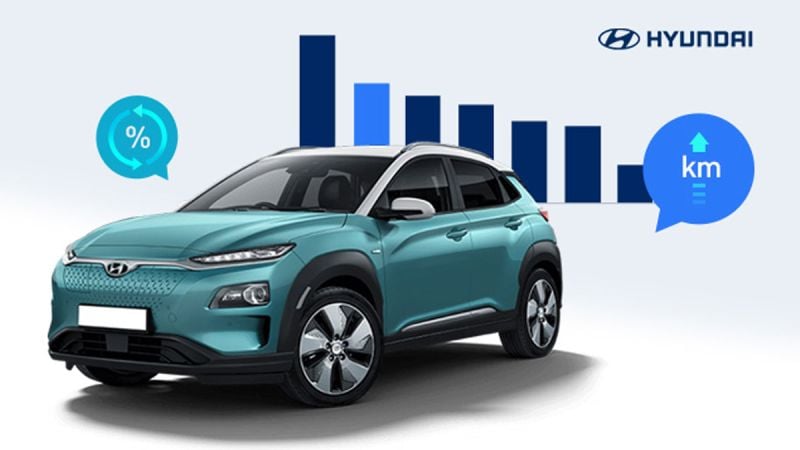Hyundai and Kia released details on its innovative heat pump technology to help EV range in cold climates. This technology was first introduced in 2014 on the first-generation Kia Soul EV but has continued to get refined. Hyundai-Kia’s heat pump technology utilizes wasted heat to warm up the cabin. This tech will help those in cold environments as they can heat their vehicle without impacting the driving range.
How Hyundai-Kia's New Technology Works
So how does this heat pump recycle wasted heat to improve/maintain range? This system uses a compressor, evaporator, and condenser. All of these components help make up the heat pump system, which captures wasted heat emitted from a vehicle’s electrical components. This pump’s primary duty is to preserve range during cold weather as EV ranges suffer from dramatic temperatures. The heat pump helps offer a consistent range throughout various temperatures.

Hyundai-Kia’s latest advancements in its heat pump technology yielded positive real-world results. The Kona EV managed to win the “Norwegian Real-Range Validation Test.” The Kona got pitted up against 20 other EVs in freezing climate to test range. The Hyundai Kona EV is rated for 449km of range in normal circumstances, like 73-degree Fahrenheit weather. The Kona managed to travel 409km in the cold, which is just a 9% deviation from what Hyundai typically states, so the Kona walked away with first prize.
The latest advancements in Hyundai-Kia’s heat pump technology have genuinely worked, and real-world tests have proven it. This new tech utilizes wasted heat from drive motors, on-board chargers, and inverters, and also from the battery pack and slow charger. This next bit is complicated, so I will quote from Hyundai themselves:
“The system uses the heat generated by these components to vaporize refrigerant from liquid to gas form. High-pressure gas is discharged from the compressor and forced into a condenser to be converted back into a liquid. This process generates additional heat energy that is recovered by the heat pump and used to warm the cabin.” (Hyundai)

The heat pump is taking a load off from the HVAC system as the recycling effect is causing the interior cabin to heat up more efficiently. The stress gets continuously taken away from the battery, and consumption from the HVAC gets reduced, leading to a class-leading EV range.
Hyundai-Kia's Testing and Results
Hyundai and Kia continue to develop its heat pump tech by testing in extreme cold like Northern Sweden in parts as low as -31 degrees Fahrenheit. Continued research will help yield more ways to recycle wasted heat to create efficiency and a more extended range.
The innovations keep piling because Hyundai-Kia has adopted a water-cooling system for its EV battery packs instead of an air-cooled approach. This advancement leads to a better range without enlarging physical dimensions. Battery cells get contained compactly and tightly, leading to an increase in battery density up to 35%.
Compounding these innovations leads to nearly double the real-world range for EVs. The first-generation Kia Soul EV had a range of about 180km with one full charge. The lower range was due to a 30kWh lithium-ion polymer battery pack but, we now see a 64kWh battery pack for the second-generation Soul EV with 386km of range. All of these innovations have effectively helped to compact battery cell technology, so a 64kWh battery can take up the same amount of space as a 30kWh battery pack leading to double the range.

Hyundai-Kia EV Tech Conclusions
I’m happy to see this technology develop because I remember going to the launch for the 2020 Kia Soul in San Diego last year, and none of the journalists were allowed to test drive the second-gen Kia Soul EV. Proper battery heaters didn’t get installed in every market. So the vehicle wasn’t being sold in all 50 states, and only the up-North markets got battery heaters put in their cars because they needed it. The entire situation was somewhat perplexing to me. Still, now with Hyundai-Kia’s advancements, it seems as if EV tech is becoming far more refined and accessible to the everyday person no matter what the climate.
If Hyundai-Kia continues to grow and refine at this rate, I’m positive the two companies can reach its goal of selling 670,000 EVs annually by 2025. Hyundai-Kia also plans to be a top-three EV manufacturer by the year 2025, and it looks like that will be a possibility soon.
Kevin Meyn is an automotive journalist for Torque News concentrating on Hyundai content. Kevin is the founder of Exhaust Sports Auto Youtube channel, where he does professional car reviews on new and used vehicles. Through the use of various resources and extended Automotive expertise, Kevin documents the latest in automotive news revolving around Hyundai. Kevin graduated from NC State University studying Supply Chain Management but has had a passion for cars since he was a child. Follow Kevin on Twitter and Instagram @exhaustsports.












Comments
It is nice that Hyundai/Kia
Permalink
It is nice that Hyundai/Kia is adopting a heat pump system to improve battery efficiency in cold weather. Tesla has had a similar heat scavenging system for many years now. I hope that Hyundai has improved their battery supply issues, because (like many European EV automakers) battery "shortages" limited the availability of the new EV soul, as well as the Kona in the recent past.